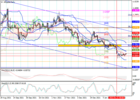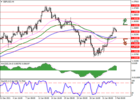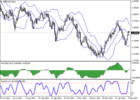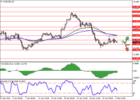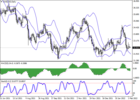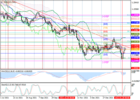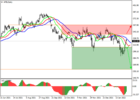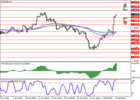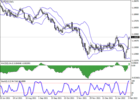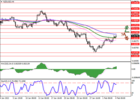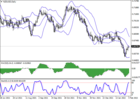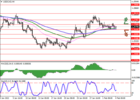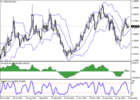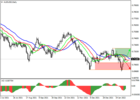SOLID ECN LLC
Solid ECN Representative
- Messages
- 511
EUR/USD
The European currency shows weak growth against the US dollar during the Asian session, developing the corrective momentum formed at the beginning of the week and updating the local highs from January 26. The instrument is moderately supported by the growing interest of investors in risky assets against the backdrop of discussions on the prospects for tightening monetary policy by the US Fed. At the moment, it is not clear whether the US regulator will decide on five or even more interest rate hikes this year, and whether the figure will be adjusted immediately by 50 basis points. The European Central Bank (ECB), in turn, relieved the markets of unnecessary expectations in advance, declaring its readiness to adjust existing parameters, focusing on the epidemiological situation caused by the spread of COVID-19, which is putting significant pressure on the region's economy. Macroeconomic statistics from Europe published on Tuesday turned out to be moderately optimistic. Investors reacted rather positively to the decline in the Unemployment Rate in Germany from 5.2% to 5.1%, while the Unemployment Change fell by 48K in January after a decrease of 29K a month earlier (expert forecasts assumed a change of only 6K).
GBP/USD
The British pound is trading with multidirectional dynamics against the US currency during the morning session, consolidating after a two-day rally, which brought the instrument to local highs on January 24. Significant support for the pound yesterday was provided by optimistic macroeconomic publications from the UK. Markit Manufacturing PMI in January rose from 56.9 to 57.3 points, while analysts did not expect any changes. Mortgage Approvals in December increased from 67.859K to 71.015K, which also turned out to be stronger than forecasts at the level of 66K. At the same time, Consumer Credit in December still slightly decreased from 0.999B to 0.831B pounds. Analysts had expected a decline to 0.80B pounds.
AUD/USD
The Australian dollar shows mixed trading dynamics against the US dollar during the Asian session. The instrument is consolidating near 0.7130 and is holding near the local highs of January 26. The development of "bullish" sentiment, in addition to the widespread weakening of the US currency across the spectrum of the market, was facilitated by the minutes of the meeting of the Reserve Bank of Australia (RBA) published yesterday. As expected, the Australian regulator left the interest rate unchanged at 0.10%, but at the same time announced the complete end of the quantitative easing (QE) program on February 10, which, however, does not mean the automatic launch of a rate increase cycle, since the regulator will continue to monitor the situation closely and respond accordingly. The overall positive picture was slightly spoiled only by the data on Retail Sales in Australia. In December, sales volumes fell by 4.4% after rising by 7.3% in November. Analysts expected a positive trend to remain at the level of 3.9%.
USD/JPY
The US dollar is showing a slight corrective growth against the Japanese yen in Asian trading, testing 114.80 for a breakout. The appearance of corrective dynamics is associated with the development of technical factors, while the fundamental background changes little. The macroeconomic statistics from the US published yesterday were ambiguous. ISM Manufacturing PMI in January fell from 58.8 to 57.6 points, which was better than market expectations by only 0.1 points. At the same time, ISM Manufacturing New Orders Index for the same period fell from 61 to 57.9 points with neutral investor forecasts. Markit Manufacturing PMI in January rose from 55 to 55.5 points, also ahead of analysts' neutral forecasts. Today, investors will be focused on the ADP Employment Change report, which precedes the publication of the final report on the labor market for January scheduled for Friday.
XAU/USD
Gold prices are falling during the Asian session, correcting after two days of growth and again trying to consolidate below the psychological level of 1800.00. The instrument, as before, is supported by geopolitical risks, as well as evidence of some slowdown in the global economic recovery. In turn, investors are counting on the beginning of a cycle of tightening monetary policy by the world's leading central banks. First of all, the US Federal Reserve is expected to raise the rate already during the March meeting, and now it is being actively discussed how large-scale the correction can be. However, the mood of investors was somewhat cooled by the Chairs of the Fed of San Francisco Mary Daly and the Fed of Philadelphia Patrick Harker, who said that there was no rush to raise the rate, and its sharp increase could be justified only in the event of a threatening rise in inflation.
The European currency shows weak growth against the US dollar during the Asian session, developing the corrective momentum formed at the beginning of the week and updating the local highs from January 26. The instrument is moderately supported by the growing interest of investors in risky assets against the backdrop of discussions on the prospects for tightening monetary policy by the US Fed. At the moment, it is not clear whether the US regulator will decide on five or even more interest rate hikes this year, and whether the figure will be adjusted immediately by 50 basis points. The European Central Bank (ECB), in turn, relieved the markets of unnecessary expectations in advance, declaring its readiness to adjust existing parameters, focusing on the epidemiological situation caused by the spread of COVID-19, which is putting significant pressure on the region's economy. Macroeconomic statistics from Europe published on Tuesday turned out to be moderately optimistic. Investors reacted rather positively to the decline in the Unemployment Rate in Germany from 5.2% to 5.1%, while the Unemployment Change fell by 48K in January after a decrease of 29K a month earlier (expert forecasts assumed a change of only 6K).
GBP/USD
The British pound is trading with multidirectional dynamics against the US currency during the morning session, consolidating after a two-day rally, which brought the instrument to local highs on January 24. Significant support for the pound yesterday was provided by optimistic macroeconomic publications from the UK. Markit Manufacturing PMI in January rose from 56.9 to 57.3 points, while analysts did not expect any changes. Mortgage Approvals in December increased from 67.859K to 71.015K, which also turned out to be stronger than forecasts at the level of 66K. At the same time, Consumer Credit in December still slightly decreased from 0.999B to 0.831B pounds. Analysts had expected a decline to 0.80B pounds.
AUD/USD
The Australian dollar shows mixed trading dynamics against the US dollar during the Asian session. The instrument is consolidating near 0.7130 and is holding near the local highs of January 26. The development of "bullish" sentiment, in addition to the widespread weakening of the US currency across the spectrum of the market, was facilitated by the minutes of the meeting of the Reserve Bank of Australia (RBA) published yesterday. As expected, the Australian regulator left the interest rate unchanged at 0.10%, but at the same time announced the complete end of the quantitative easing (QE) program on February 10, which, however, does not mean the automatic launch of a rate increase cycle, since the regulator will continue to monitor the situation closely and respond accordingly. The overall positive picture was slightly spoiled only by the data on Retail Sales in Australia. In December, sales volumes fell by 4.4% after rising by 7.3% in November. Analysts expected a positive trend to remain at the level of 3.9%.
USD/JPY
The US dollar is showing a slight corrective growth against the Japanese yen in Asian trading, testing 114.80 for a breakout. The appearance of corrective dynamics is associated with the development of technical factors, while the fundamental background changes little. The macroeconomic statistics from the US published yesterday were ambiguous. ISM Manufacturing PMI in January fell from 58.8 to 57.6 points, which was better than market expectations by only 0.1 points. At the same time, ISM Manufacturing New Orders Index for the same period fell from 61 to 57.9 points with neutral investor forecasts. Markit Manufacturing PMI in January rose from 55 to 55.5 points, also ahead of analysts' neutral forecasts. Today, investors will be focused on the ADP Employment Change report, which precedes the publication of the final report on the labor market for January scheduled for Friday.
XAU/USD
Gold prices are falling during the Asian session, correcting after two days of growth and again trying to consolidate below the psychological level of 1800.00. The instrument, as before, is supported by geopolitical risks, as well as evidence of some slowdown in the global economic recovery. In turn, investors are counting on the beginning of a cycle of tightening monetary policy by the world's leading central banks. First of all, the US Federal Reserve is expected to raise the rate already during the March meeting, and now it is being actively discussed how large-scale the correction can be. However, the mood of investors was somewhat cooled by the Chairs of the Fed of San Francisco Mary Daly and the Fed of Philadelphia Patrick Harker, who said that there was no rush to raise the rate, and its sharp increase could be justified only in the event of a threatening rise in inflation.
